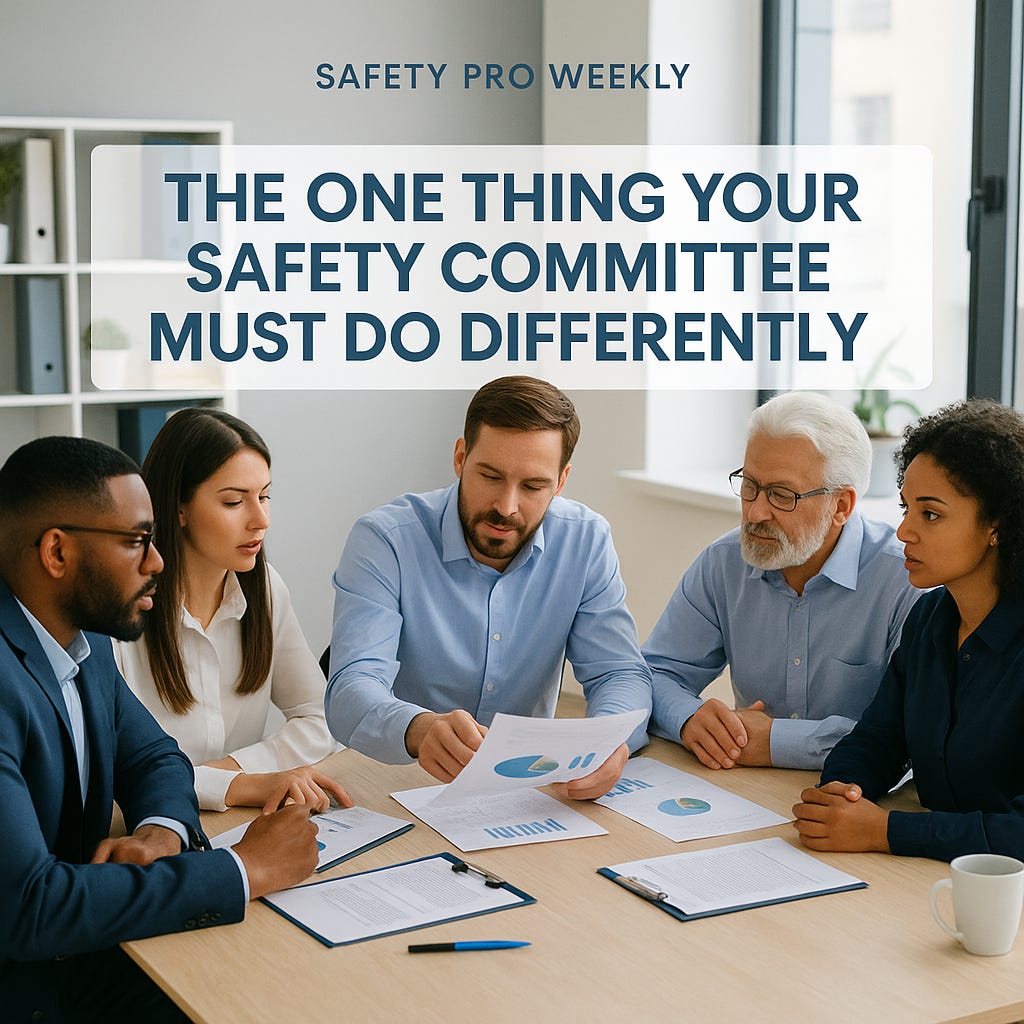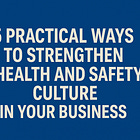The One Thing Your Safety Committee Must Do Differently
Hello and welcome to this week’s edition of Safety Pro Weekly.
Most Joint Health & Safety Committees meet regularly, take minutes, review inspections, and yet still don’t make the kind of impact they want.
I’ve seen this many times and been on committees where the members are well intentioned, come to the meeting prepared, and yet the change they seek remains elusive.
It’s not that they aren’t committed to making an impact. It’s just that they focus on the wrong things.
Key Points at a glance
Most committees get bogged down in minor hazards rather than focusing on the most relevant hazards.
This often happens due to a lack of training and a lack of focus.
Instead, committees should focus on one main hazard each meeting and drive it to completion.
This narrowing of focus on key hazards, prevents dilution of effort, establishes trust and builds a track record of success.
What happens is the meetings often get sidetracked. Everyone has their own ideas to bring to the table, which is great, but without a filter to assess the relevance of each idea, things can get bogged down. The agenda often becomes reactive, focusing on minor hazards and housekeeping items instead of focusing on items that could really move the needle in your safety program.
Committees end up acting like suggestion boxes rather than safety leadership teams.
Have you ever served on a committee like this?
I have.
Most of us have, at one time or another.
Let’s take a look at why this happens and what you can do instead.
Why This Happens
There are many reasons for this, but it often comes down to lack of training and lack of focus.
Often when new members join the committee, they get minimal, if any, training. While it’s important to have front line employees on the committee, without clear guidance and an understanding of basic health and safety principles, they may not be clear on what to do or why they’re there.
The second reason is a lack of clear expectations. Many committees have no measurable KPI or goals. They simply meet every month, discuss a few trivial issues and then promptly forget about them till next month.
So what is a dedicated committee to do?
The One Thing JHSCs Must Do Differently
Here’s what I suggest you do differently.
Focus on one high-priority hazard at a time and drive it to resolution.
Rather than discussing everything superficially, the JHSC should identify the most serious risk and fix it completely.
The goal here isn’t to generate a long list of minutes, it’s to eliminates one serious hazard every cycle.
Why This Works
Here’s why I think focusing on one priority hazard at a time can improve your committee’s effectiveness:
Focus beats volume. Concentrating on one hazard at a time makes it much easier to produce measurable results. Instead of diluting your focus over a multitude of minor tasks, you focus your team’s efforts into eliminating one substantial risk. This singular focus gives you a much better chance of success in tackling the problem. As the saying goes, “Do less, better.”
Focus gets results, which builds trust. When workers see real hazards being fixed, it improves morale, establishes trust and has a positive effect on safety culture.
Focus demonstrates due diligence. When you can show tangible results on hazard elimination, it demonstrates that you’ve taken clear steps to protect the safety of workers over time. Rather than getting bogged down in minor issues every month, you begin to build a track record of success.
How to Do It
So how do you choose the right hazard to focus on and control? Here are the steps to make it happen:
Step 1: Identify the risk. Look to previous hazard assessments, incident reports, and historical data to identify where employees are at the greatest risk and choose a risk that is relatively high in both severity and frequency of occurrence.
Step 2: Get specific. Define both the hazard and the desired outcome clearly. What exactly do you hope to avoid? How will you accomplish this? What measurables tell you when you’re successful?
Step 3: Assign an owner and a deadline. Nothing gets done without an owner and a deadline. Who is in charge of the improvement? When will it be accomplished? Avoid vague commitments like ‘management will look into it.’
Step 4: Track progress. Have a way to measure progress, build in intermediate steps to the process if appropriate and have a deadline for each one. Hold small team meetings as appropriate to keep everyone on track.
Step 5: Close it visibly. When you’re trying to establish trust and credibility for your committee’s efforts, it’s not enough just to do it.
You have to also be seen to do it.
Document the fix, take photos, and share the result with workers. Don’t be afraid to brag a little and celebrate your success.
If your JHSC can’t point to one serious hazard it has helped eliminate in the last 60 days, that’s a sign you’re not as effective as you could be. At your next meeting, ask: ‘Which single hazard are we fixing this month, and who owns it?’ If nobody can answer, you’ve found your first problem.
Let me know in the comments what big problem your committee is working on right now.
That’s it for this week, thanks for reading.
Safety Pro Weekly is published every Tuesday on LinkedIn and Substack.
Cheers,
Dan.






